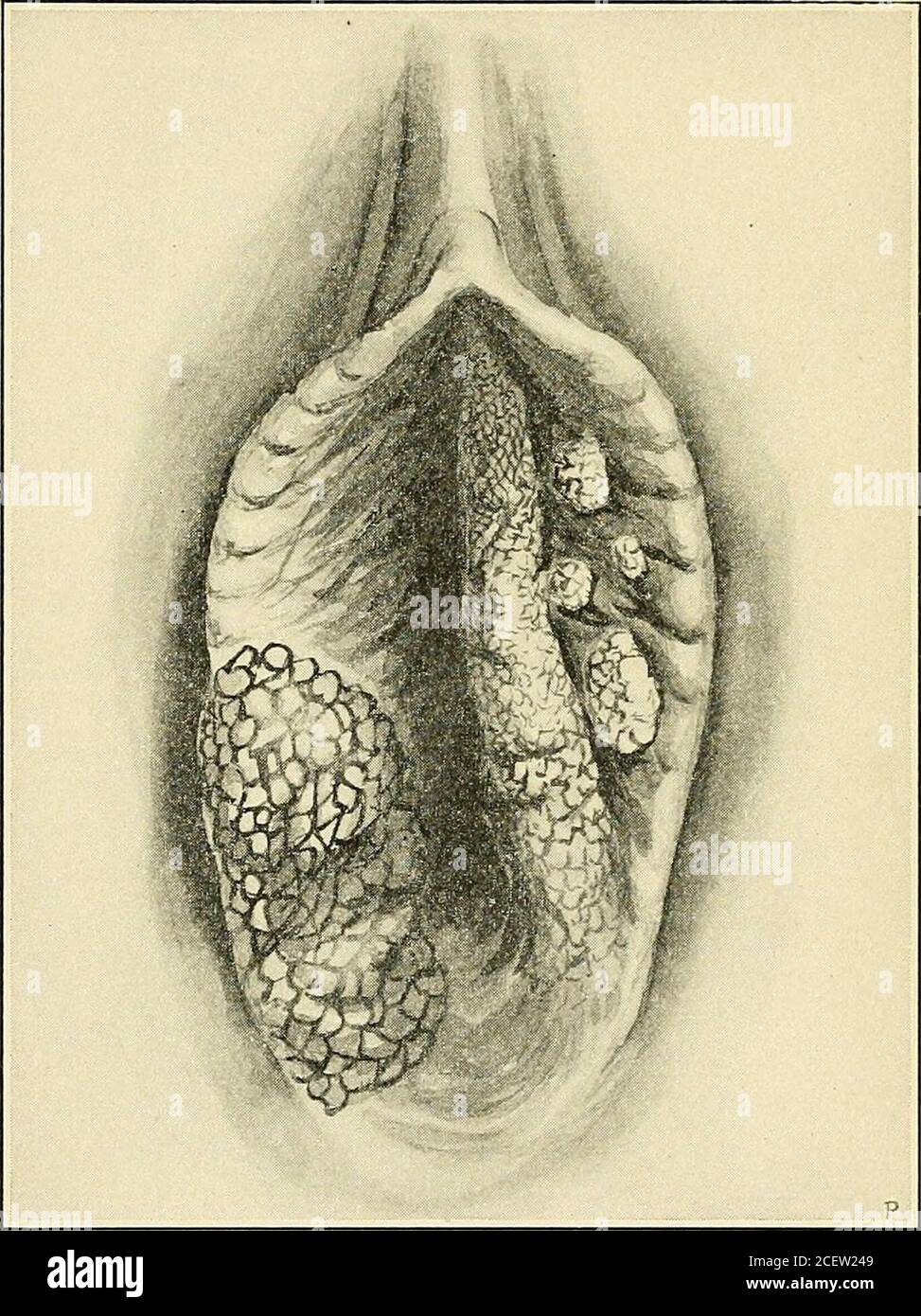. The Principles and practice of gynecology : for students and practitioners. ve. The operation is similar to thatdescribed for kraurosis and pruritus vulvae, Figure 81. PAPILLOMATA, CONDYLOMATA, OR WARTS. Warty growths are epithelial in type and are characterized byhypertrophy of the papilla of the skin or raucous membrane, increaseof connective tissue, and thickening of the epithelial covering. Theyare divided into three classes: 1. Non-speciiic—simple papillomata—ordinary warts.22 338 TUMORS, TUBAL PREGNAyCY, MALFORMATIONS. 2. Gonorrlioeal—condylomata acuminata—pointed condylomata, specilic

Image details
Contributor:
Reading Room 2020 / Alamy Stock PhotoImage ID:
2CEW249File size:
7.1 MB (517.7 KB Compressed download)Releases:
Model - no | Property - noDo I need a release?Dimensions:
1368 x 1826 px | 23.2 x 30.9 cm | 9.1 x 12.2 inches | 150dpiMore information:
This image is a public domain image, which means either that copyright has expired in the image or the copyright holder has waived their copyright. Alamy charges you a fee for access to the high resolution copy of the image.
This image could have imperfections as it’s either historical or reportage.
. The Principles and practice of gynecology : for students and practitioners. ve. The operation is similar to thatdescribed for kraurosis and pruritus vulvae, Figure 81. PAPILLOMATA, CONDYLOMATA, OR WARTS. Warty growths are epithelial in type and are characterized byhypertrophy of the papilla of the skin or raucous membrane, increaseof connective tissue, and thickening of the epithelial covering. Theyare divided into three classes: 1. Non-speciiic—simple papillomata—ordinary warts.22 338 TUMORS, TUBAL PREGNAyCY, MALFORMATIONS. 2. Gonorrlioeal—condylomata acuminata—pointed condylomata, specilic vegetations or venereal warts. 3. Syphilitic—flat condylomata. 1. Non-specific, Simple Papillomata, or ordinary warts, arefound not uncommonly on the mons veneris, less frequently on thelabia. They are of unknown origin, usually of dark-brown color, are not deeply divided, may have a broad base or may be peduncu-lated, and are not apt to coalesce into large, compact masses. The Treatment is excision with the sharp curette and cauterizationof the base. FiGUEE 152.. Simple warty vegetations of the vulva. Gonorrhoeal Warts—that is, warts associated with gonorrhoea—are found on the vulva, vagina, cervix uteri, perineum, and aboutthe anus. These warts occur singly in groups, or in cauliflower-likemasses. The growths may be so large as to interfere with coitus, urination, or defecation ; they present a surface which is soft, moist, of bluish color, and divided into small nodules with pointed ends likea cocks comb. The growth occurs during pregnancy, is rapid, but maydisappear promptly after labor. There is usually an associated fetidvaginitis. The question has been raised whether this form of condy- TUMORS OF THE VULVA AND VAGTNA. 339 loraa may not occur imloppiulently of the gonococcus, but the clini-cal evidence, inehuling the resuUs of hacterioh)gical studies, stronglypoints to at kast a coexistent gonorrh(ea. Jhe part jilaycd by thegouoeoeeus, exi-ept as a predisj)osi